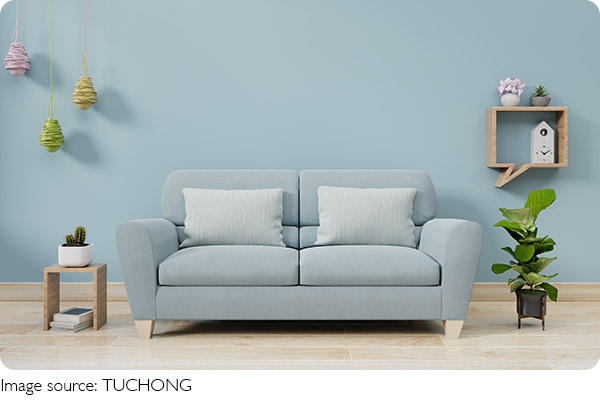Sofa Evolution

The sofa is a multi-seated chair with soft cushions. Equipped with springs or thick foam padding, the backrest chair has armrests on both sides and is one of residents' most frequently used furniture items today.
History of the Sofa Originating from Europe:
• 4000 BC: Ancient Egyptian Civilization
According to reliable archaeological records, the earliest sofas can be traced back to the ancient Egyptian civilization 4000 years ago. In many ancient Egyptian wall paintings, we can see early sofas—precursors to backrest chairs. The esteemed pharaohs of ancient Egypt would sit on wooden or stone backrest chairs during ceremonies or speeches, sometimes adorned with animal fur for added comfort.
The strict class system of ancient Egypt meant that sitting high symbolized status. Ordinary Egyptian people typically sat on the ground, while only high-ranking officials and dignitaries could sit on chairs to oversee the masses.
• 9th century BC to 5th century AD: Ancient Greek and Roman Period
Over ten centuries later, the civilizations of ancient Greece and Rome began to flourish, with an artistic trend prevailing.
Epics, sculptures, architecture, and painting were core Greek and Roman cultural expressions. Chairs inherited from ancient Egypt gradually became the mainstream seating of that time, with many designers imbuing chairs with unique aesthetic appeal.
From the wall paintings, we can see that chairs from that period had already evolved into early classic backrests with cushioned seats, appearing more elegant and providing greater comfort. The ancient Greek and Roman periods were also times of explosive growth in European cultural arts.
Much of today's Greek mythology originated from that era. Great poets like Homer and later numerous troubadours provided the earliest literary works, indirectly inspiring people's high pursuit and longing for art and literature.
• 17th to 19th century: Birth of the "sofa"
By the 17th century in Europe, society began to accelerate its development, and the term "sofa" emerged, specifically referring to comfortable chairs.
Modern sofa design concepts gradually emerged, and various sofa chairs became popular in noble families, offering both comfort and grandeur compared to hard seating.
In the early 19th century, the Victorian era arrived, witnessing the simultaneous flourishing of artistic design and industry. Numerous artistic styles became popular in Europe, and designers began to carve decorations on sofas to match architectural and interior styles.
Products such as Rococo chairs, Louis series chairs, and Chippendale chairs were all products of that era and gained great popularity in society.
• 19th to 20th century: Industrial Revolution Period
The 19th century ushered in the Industrial Revolution, with modern craftsmanship gradually emerging.
Spring assemblies, foam rubber (synthetic sponge), and plastic inflatable products began widely used in home-building materials. As the most common seating in living rooms, sofas were gradually perfected by modern craftsmanship.
In Europe at the time, social resources began to tilt towards people's quality of life, while class distinctions remained clear. Industry development allowed the nobility to enjoy better living and housing conditions, and sofas increasingly became a pursuit of comfortable living for people.
Maintenance of Contemporary Sofas
1. Fabric Sofas:
Regular vacuuming is recommended. When cleaning the dust on fabric sofas, it is best to first wipe with pure cotton cloth, then use a soft brush to remove dust from recessed areas. Avoid using gasoline or other organic solvents to wipe areas treated with paint to prevent discoloration and paint loss. Professional cleaning companies should be engaged to clean the sofa every six months to a year.
2. Leather Sofas:
In summer, sweat is absorbed into the pores of leather, and high temperatures and humidity can cause chemical reactions between organic substances in sweat and leather, leading to odors. It is essential to wipe with a damp cloth regularly.

Avoid using alkaline cleaning agents, as genuine leather is treated with acidic processes during tanning, and alkalinity can reduce the softness of leather, leading to wrinkles and cracking over time.
As we continue to innovate and adapt, the sofa will undoubtedly endure as an iconic piece of furniture, symbolizing relaxation, elegance, and the art of living well.

 · Lifestyle Team
· Lifestyle Team